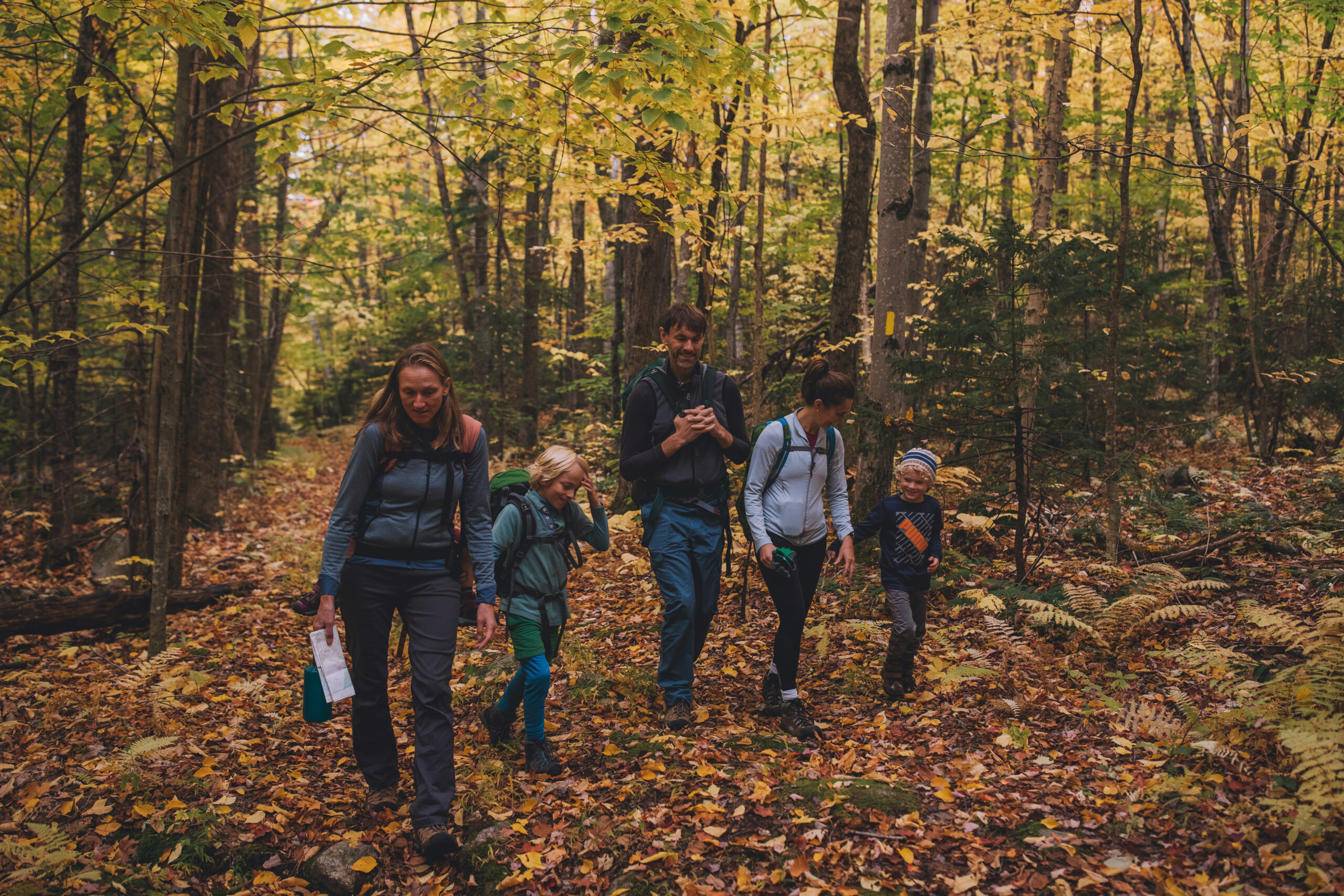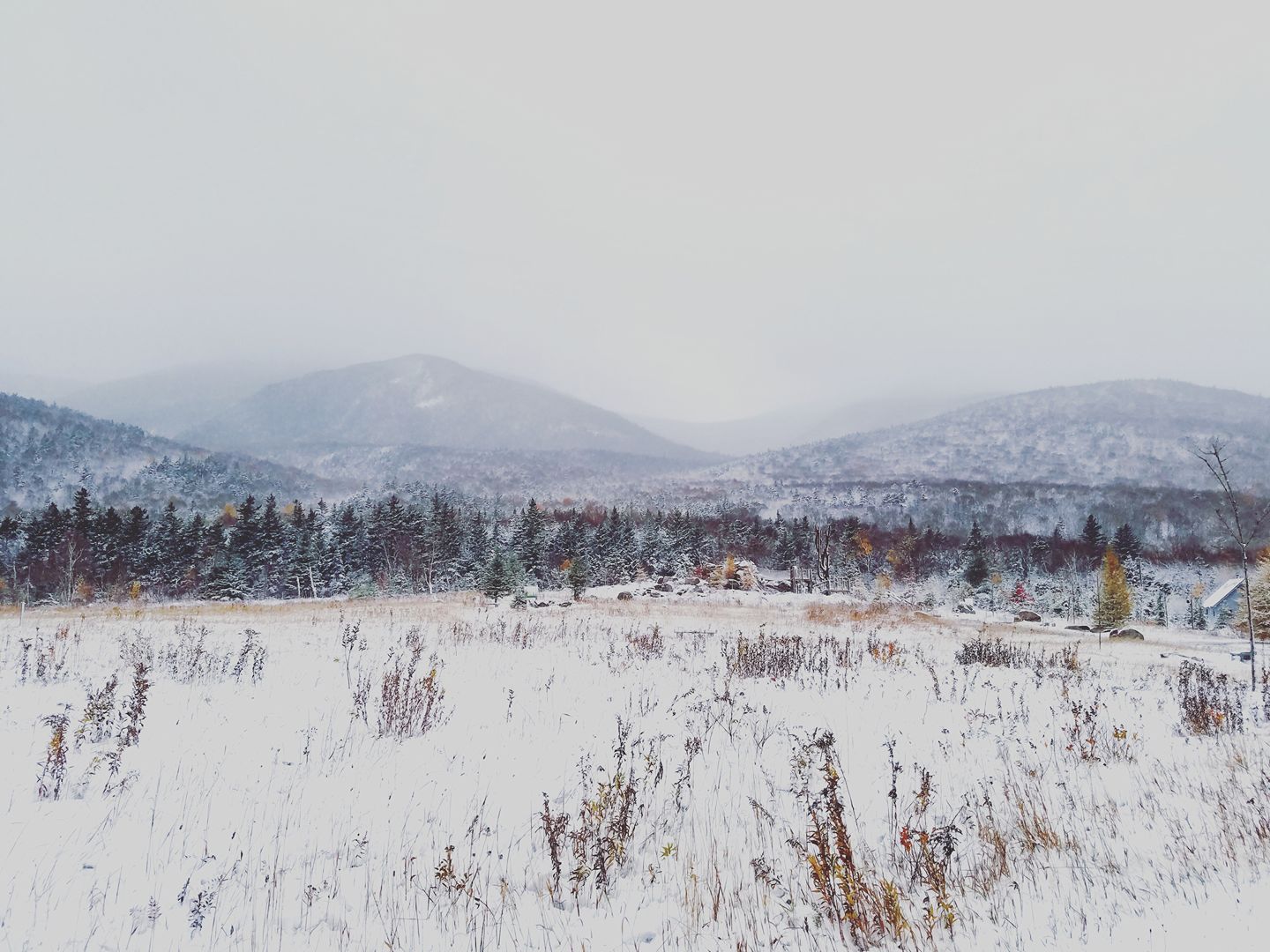

Oct. 11, 2019. AMC Cardigan Reservation, New Hampshire– Photo by Paula Champagne.
October and November can be a beautiful time to hike in the mountains of northern New England—especially with all the brilliant fall colors—but hiking at this time of year can also present some challenges for the unprepared. While the valleys and lower elevations may still have temperatures in the 60s and 70s with green grass, the mountains can be much colder with ice and snow starting to coat higher elevations. Hikers should keep several things in mind to be prepared and have fun when heading out for a late-fall adventure.
Watch Your Step
Beginning in mid- to late-October, once all the leaves have fallen, additional challenges begin to arise on the trails. The fallen leaves, while pretty and fragrant, can cover the trails like a carpet that can be 6 inches or more deep. This layer of leaves can obscure rocks, roots, and holes that can cause tripping hazards or possibly cause a twisted ankle. Trail runners, which lack ankle support, may not be the best footwear for these conditions, and whatever you wear on your feet, hikers should plan to go slowly through these areas and add some time to their itinerary.
Shorter Days
It’s important to remember that it starts to get dark much earlier as we enter the fall months, and that it gets dark in the woods even earlier than in the open. As the days get shorter, get an early start and bring a headlamp or two, and extra batteries.


The presence of snow is not at all unusual in the late fall—especially in New Hampshire’s White Mountain National Forest.
Mind the Weather
As previously mentioned, it can be much colder at higher elevations, and this seems to come as a surprise to many hikers, especially in the shoulder seasons. So, it’s time to put some cold weather clothing, including hats, gloves, or mittens, and warm non-cotton layers in your pack. It may also be time to lose the hydration pack and water tube and break out the insulated water bottles. We see too many hikers with frozen water tubes. You also may want to pack additional snacks this time of year to ensure you can keep your belly full and core temperature up. Three-season boots are still usually okay to wear, but you may want a heavier pair of socks to keep your feet warm.
Consider Traction
While it may be too early to be breaking out the snowshoes, late fall is a good time to consider carrying some spikes. Both Kahtoola and Hillsound make good options. If you wear spikes on winter boots, you may want to consider getting a pair of spikes one size smaller for your three-season boots. Spikes that are too loose on your boots can be dangerous. Finally, while spikes can help on snow and ice at higher elevations, you should remember that as the day warms, your spikes can cause snow to build or ball up on the bottoms of your feet. This, of course, can make descending extremely hazardous.
As in any season, make sure to carry the Ten Essentials and leave your plans with someone you trust. Enjoy this beautiful fall season in the mountains—but be prepared for what you may encounter. Happy trails!